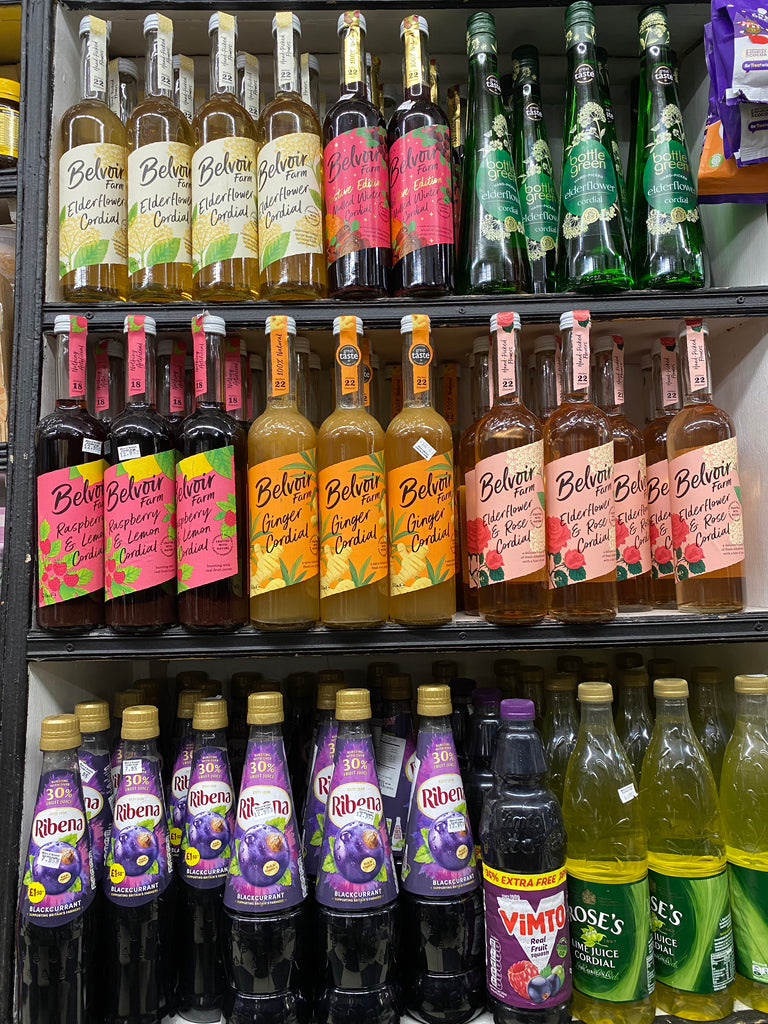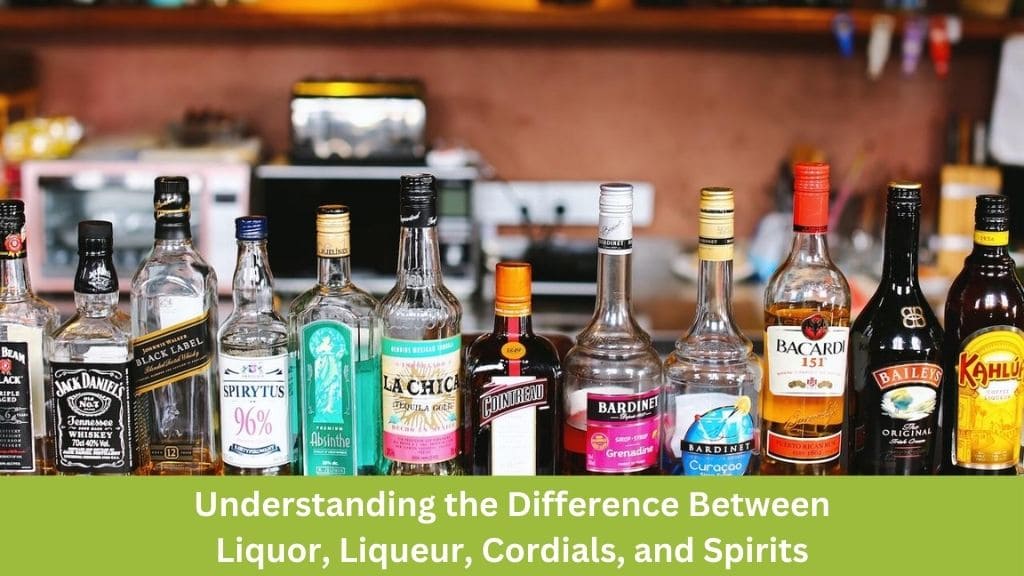When navigating the world of alcoholic drinks, whether at a bar, liquor store, or engaged in a conversation about libations, you’re likely to encounter a variety of terms. Understanding the distinctions between liquor, liqueur, cordials, and spirits is essential for making informed choices and appreciating the diverse range of alcoholic beverages available.
Liquor and Spirits
Definition:
- Liquor and spirits are often used synonymously to describe strong alcoholic drinks.
- These terms encompass a wide range of alcoholic beverages derived from grains or other plants and fermented into “hard alcohol.”
Characteristics:
- Examples of liquor and spirits include rum, vodka, gin, whiskey, tequila, and brandy.
- They typically have minimal to no added sugar or flavor, although flavored varieties have become increasingly popular.
- Liquors and spirits are commonly used as the base for cocktails, providing the foundation for a wide array of mixed drinks.
Usage:
- Liquors and spirits are versatile and can be enjoyed neat, on the rocks, or as components of cocktails and mixed drinks.
- They are often consumed in social settings, bars, restaurants, and at home for relaxation or celebration.
Liqueur
:max_bytes(150000):strip_icc()/Liquor-vs-Liqueur-vs-Spirit-FT-BLOG1122-88b33026a97d4554b0bf811c0ee0455b.jpg)
Definition:
- Liqueur is a category of alcoholic beverages characterized by their sweet and flavorful nature, often consumed in small quantities.
- Unlike liquor or spirits, liqueurs contain added sugar, flavors, and sometimes lower alcohol content.
Characteristics:
- Liqueurs are renowned for their diverse flavors, ranging from fruity and floral to creamy and spicy.
- They are commonly used as flavoring agents in cocktails, enhancing the taste and aroma of mixed drinks.
- Examples of popular liqueurs include Curaçao, Disaronno, Bailey’s Irish Cream, Amaretto, and Frangelico.
Usage:
- Liqueurs are typically enjoyed in moderation due to their sweetness and intensity of flavor.
- They are often served as digestifs after a meal, incorporated into dessert recipes, or used creatively in cocktails to add depth and complexity.
Cordials

Definition:
- Cordials are a type of liqueur that shares similar characteristics with other liqueurs, including sweetness and flavorfulness.
- In some regions, the terms “liqueur” and “cordial” are used interchangeably, though there may be subtle differences in usage and perception.
Characteristics:
- Cordials often feature a wide range of flavors, from traditional fruit and nut essences to exotic spices and herbs.
- They are prized for their versatility in mixology, contributing unique and distinctive flavors to cocktails and mixed drinks.
- While cordials may have similarities to liqueurs, regional variations and cultural preferences can influence their production and consumption.
Usage:
- Cordials are enjoyed in much the same way as liqueurs, either as standalone sippers, flavor enhancers in cocktails, or accompaniments to desserts and confections.
- They add a touch of sophistication and indulgence to any drinking experience, whether at home or in a social setting.
Differentiating Factors
Sugar Content:
- Liquors and spirits typically have minimal to no added sugar, while liqueurs and cordials contain varying levels of sweetness, imparting richness and depth of flavor.
Flavor Profile:
- Liquors and spirits focus primarily on the base ingredients and distillation process, whereas liqueurs and cordials prioritize flavor infusion and complexity.
Alcohol Content:
- Liquors and spirits generally have higher alcohol content, often exceeding 40% alcohol by volume (ABV), whereas liqueurs and cordials may have lower ABV due to added sugars and flavors.
Cultural and Regional Variations:
- Different cultures and regions may have distinct interpretations and preferences regarding the production, consumption, and naming conventions of alcoholic beverages.
Conclusion
Understanding the nuances between liquor, liqueur, cordials, and spirits is essential for both novice and seasoned enthusiasts of alcoholic beverages. By recognizing the unique characteristics, flavor profiles, and usage scenarios associated with each category, individuals can elevate their drinking experiences and appreciate the diversity of libations available. Whether sipping a fine whiskey, indulging in a decadent liqueur, or experimenting with creative cocktails, the world of alcoholic beverages offers something for every palate and occasion. Cheers to exploration and discovery in the fascinating realm of spirits!
I’m Chen Mina, from Vol de Nuit, who has a special passion for bartending, especially mixing wine, beer, and cooktail. Here you will find content about alcoholic beverages, I will bring you knowledge that few people know about this drink.





